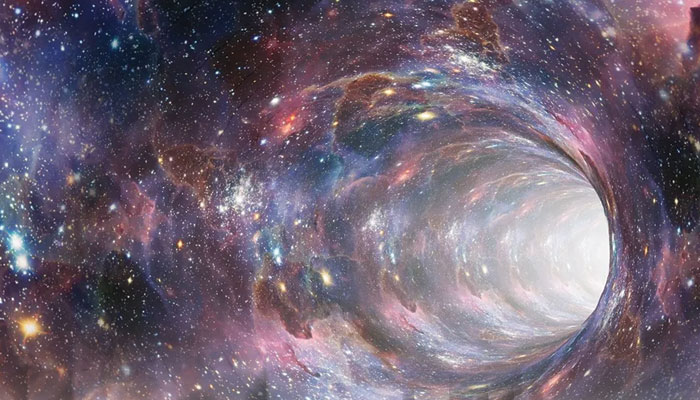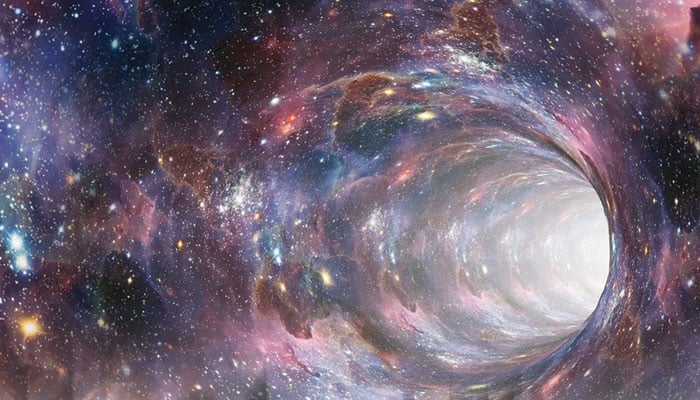
You see many stars in the sky at night, but the star closest to you is not visible at night but during the day, ie our sun, yes our sun is also a star. All the stars visible in the night sky are similar to our sun, some are bigger than the sun, some are the same as it and some are smaller than it. All these stars are so far from our sun that we have not been able to send any robotic mission to any of these stars and will not be able to in the near future.
Our Sun is our closest star, its light takes 8 minutes 21 seconds to reach us. We see any object only when its light or light is reflected from it and reaches our eyes. Since sunlight travels 150 million kilometers to reach us in 8 minutes and 21 seconds, we are always seeing a sun that is 8 minutes and 21 seconds old, because until the sunlight reaches us, it will be visible to us. will not come
Even if the sun rises, you will see it only after 8 minutes and 21 seconds, and even if the sun sets, you will still see it for 8 minutes and 21 seconds. How far are the stars visible in the sky from us? The nearest star to us after the Sun is about ~4.5 light-years (the distance light travels in one year is called a light-year) away. You can estimate the size of the universe. If you look at the sky at night, you will see many lakhs of stars, but this is a small part of the stars in the sky.
There are about 2,000,000,000,000 galaxies in the universe, or 2 trillion. Astronomers don’t know exactly how many stars are in each of these 2 trillion galaxies. Most of them are far away. But we can get a good estimate of the number of stars in the Milky Way. Those stars are also diverse and come in different sizes and colors.
Astronomers still do not know how many stars there are in each galaxy
Our sun, a white star, is medium in size, medium in mass, and medium in temperature. 27 million degrees Fahrenheit (15 million degrees Celsius) at its core. Massive, massive, and hot stars tend to be blue, such as Vega in the constellation Lyra. Smaller, fainter stars are usually red, such as Proxima Centauri. Apart from the Sun, these closest stars to us, the red, white and blue stars give off different amounts of light.
By measuring the light from this star, specifically its color and brightness, astronomers can estimate how many stars there are in our galaxy. By the same method, they discovered that the Milky Way contains about 100 billion stars. There are about 200 billion trillion stars in the universe. The number is so large, it’s hard to imagine. The most distant galaxy ever observed by the James Webb Space Telescope, which formed within about 325 million years of the Big Bang. Although he has seen many galaxies that appear unusually far away, this is the first to prove that they are as far away as they appear.
Astronomers measure the distance of cosmic objects using a metric called redshift. Because of the expansion of the universe, the farther an object is from Earth, the faster it is moving away from us. Similar to the Doppler effect, in which a sound changes depending on whether it is moving toward or away from the listener, the color of light from a galaxy becomes redder the faster it moves away. By comparing how red a galaxy appears to its actual color, astronomers can determine how far away the galaxy really is.
In early observations of galaxies by James Webb, astronomers could only estimate the redshift of each galaxy. These observations provided clues to galaxies with redshifts of 12 and above, meaning they appear to be more than 30 million light-years away and may have formed within 400 million years of the Big Bang, but many scientists Now, as part of the JWST Advanced Deep Extragalactic Survey (JADES), researchers have confirmed the redshifts of four very distant galaxies between about 10.4 and 13.2. that they formed between 325 million and 450 million years after the Big Bang.How the most distant galaxies differ from galaxies in our cosmic neighborhood.
Voyager 1 and Voyager 2 were launched in 1977 for space exploration. According to Scientific American report, in order to extend the life of the probe by a few more years, the decision is being made to shut down some more systems to conserve the depleting energy of both Voyagers, so that signals can be received from there by 2030. Over the past three years, the team has turned off the heaters on Voyager I and II, and surprisingly, both Voyagers have continued to operate below the temperature at which they were tested. It is a feat of superior engineering that both Voyager spacecraft remain after nearly half a century in space.
Incredibly, both Voyagers are powered by radioactive plutonium reactors, which have kept the tiny onboard computers running hot for decades without interruption. The main purpose of these missions was to obtain information and send images of Jupiter and Saturn, and their moons.On its journey in 1990, Voyager 1 took a picture of Earth, 3.7 billion miles from the Sun, with a small blue The dot is visible. NASA’s Voyager 1 and 2 are the first missions to the universe that are so far away from us that they are steadily receding, scientists say, as both Voyagers are running low on power. More components and equipment need to be shut down, and if all goes really well, we may be able to extend both missions to the 2030s.
In this regard, scientists are thinking of extending the missions for a few more years by conserving power. Cosmic distances are measured in light years. Light travels three hundred thousand kilometers in one second. There are eighty six thousand four hundred 86400 seconds in a day. In a day, light travels twenty five billion ninety two million kilometers. The distance light travels in one year is called a light year. As long as we measure the distances inside our solar system, the kilometer and mile scales are sufficient for these measurements, but if we want to measure the interstellar distances under the same scale outside our solar system, it is It is impossible.
For example, the star Alpha Centauri is 4.25 light years away from us. It is such a great distance that “a spaceship with a speed of 60000 km per hour, that spaceship will continue at that speed for 76000 years without any break, then this spaceship will reach the star Alpha Centauri. Remember. However, the Voyager spacecraft is heading towards our neighboring star at the same speed. It has been forty-six years since it flew from the earth, in these forty-six years it has traveled more than 26 billion kilometers away from us.
setTimeout(function(){
!function(f,b,e,v,n,t,s)
{if(f.fbq)return;n=f.fbq=function(){n.callMethod?
n.callMethod.apply(n,arguments):n.queue.push(arguments)};
if(!f._fbq)f._fbq=n;n.push=n;n.loaded=!0;n.version=’2.0′;
n.queue=[];t=b.createElement(e);t.async=!0;
t.src=v;s=b.getElementsByTagName(e)[0];
s.parentNode.insertBefore(t,s)}(window,document,’script’,
‘https://connect.facebook.net/en_US/fbevents.js’);
fbq(‘init’, ‘836181349842357’);
fbq(‘track’, ‘PageView’);
}, 6000);
/*setTimeout(function(){
(function (d, s, id) {
var js, fjs = d.getElementsByTagName(s)[0];
if (d.getElementById(id)) return;
js = d.createElement(s);
js.id = id;
js.src = “//connect.facebook.net/en_US/sdk.js#xfbml=1&version=v2.11&appId=580305968816694”;
fjs.parentNode.insertBefore(js, fjs);
}(document, ‘script’, ‘facebook-jssdk’));
}, 4000);*/



